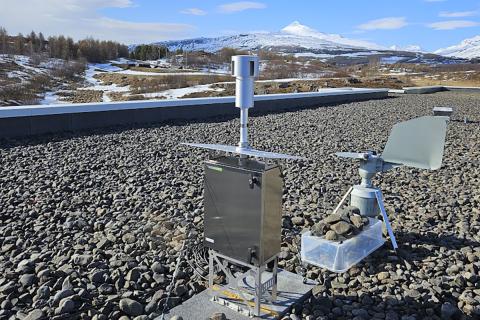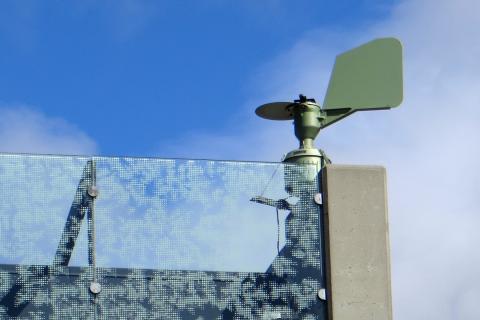Pollen monitoring

AUTOMATIC POLLEN MEASUREMENT SYSTEMS
BIRCH POLLEN - GRASS POLLEN – POLLEN FORECAST
Icelandic Institute of Natural History (IINH) has conducted national pollen monitoring since 1988, with measurements occurring from April to September annually. This data serves as crucial information for allergy sufferers.
In line with global advancements in pollen monitoring, IINH is embarking on transitioning from manual pollen monitoring methods to real-time automatic measurements.
The new automatic instrument has been operational in Akureyri since 2022, and as of this year (2024), it will also be operational in Garðabær. Instead of daily averages becoming available after a week, information is now accessible in real-time, with a resolution of 15 minutes.
What is the mechanism behind automatic pollen measurements?
Operating on the principle of drawing in ambient air along with its particles, including pollen grains, the measurement system concentrates them and directs them into a measurement chamber. Here, holographic techniques are employed to measure these particles while they are in flight. Subsequently, an artificial intelligence algorithm analyzes the data to provide insights into the various types of pollen and their concentrations in the air.
Data Presentation
Under the tab "SJÁLFVIRKUR FRJÓKORNAMÆLIR" people can access three plots. The first plot displays real-time data for the past 24 hours, showcasing the main types of allergenic pollen in Iceland. The second plot provides data for the past month, while the last plot presents data since the start of automatic measurements.
Additionally, IINH offers pollen forecasts and daily measurement data, comparing them to average pollen season levels.
The European Pollen Information website provides information in English and German on pollen levels in most European countries, including Iceland. Information on pollen levels in Iceland is updated weekly over the summer.
Publications
Przedpelska-Wasowicz, E.M., P. Wasowicz, A.Ó. Áskelsdóttir, E.R. Guðjohnsen og M. Hallsdóttir 2021. Characterization of pollen seasons in Iceland based on long-term observations: 1988–2018. Aerobiologia (2021). https://doi.org/10.1007/s10453-021-09701-y
Margrét Hallsdóttir 2007. Frjótími grasa á Íslandi. Náttúrufræðingurinn 75(2–4): 107–114.
IINH Contacts
Ewa Maria Przedpelska-Wasowicz, Biologist, ewa@ni.is
Aníta Ósk Áskelsdóttir, Biologist, anita.o.askelsdottir@ni.is
